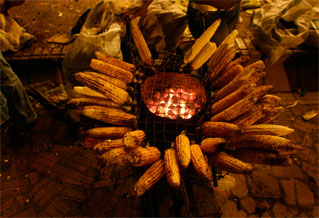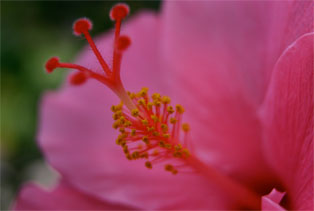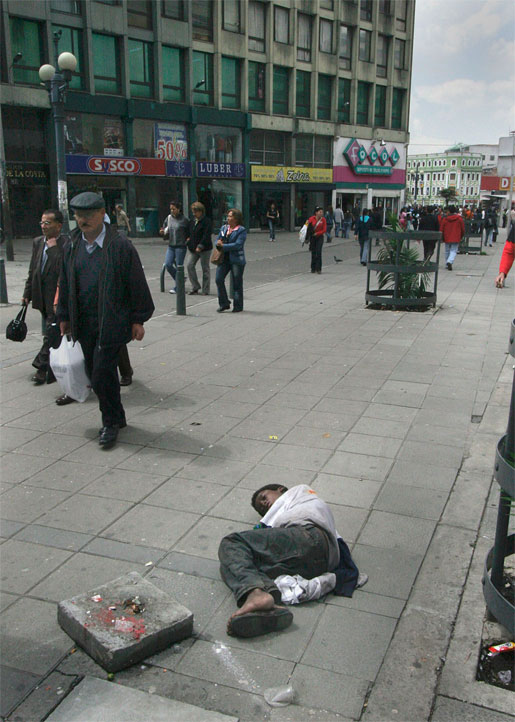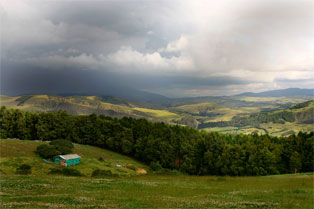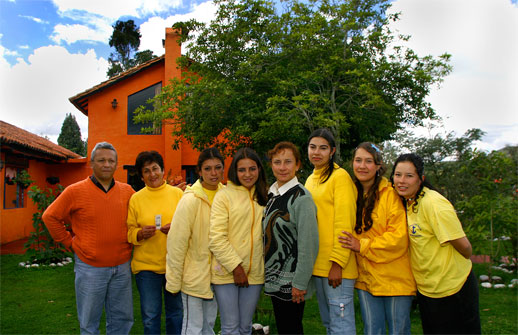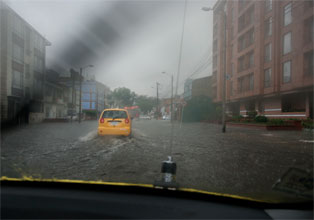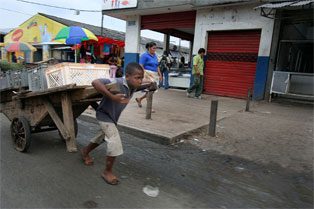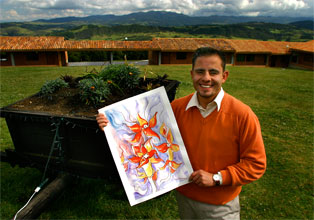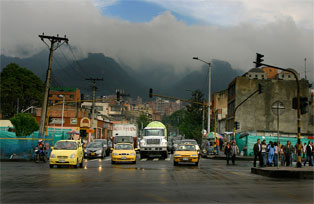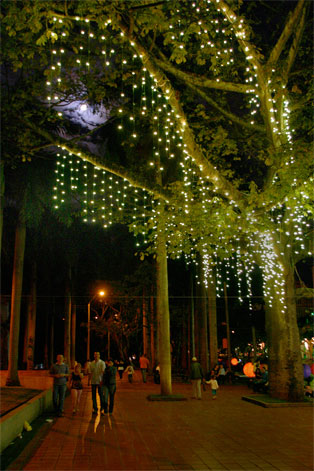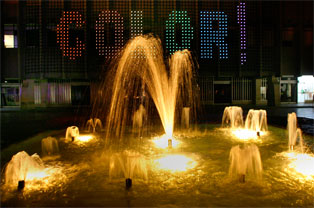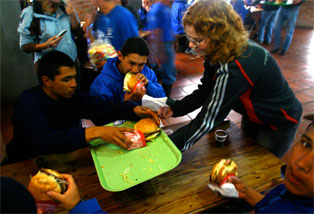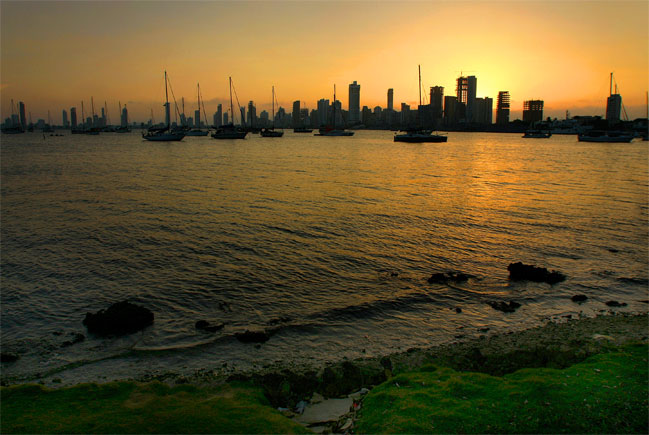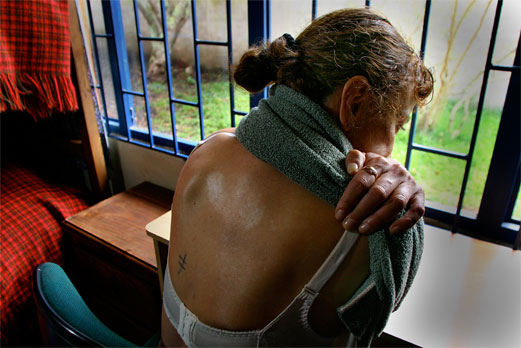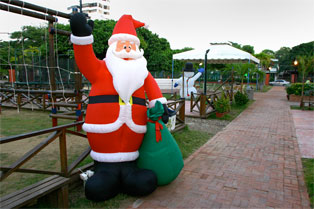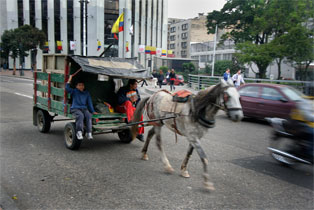CARTAGHENA: Following seven days of quick sailing from Chaguaramas, we raised the skyline of Cartaghena in the horizon. This was to be the start of a month`s touring around in this magnificent South-American pearl of a country.
MISERY: There are many sad things to see in Colombia. Especially during Christmas, this makes quite an impression on us, and is testimony to the fact that we humans still have a long way to go before we have fulfilled the meassage of Christmas.
CARTAGHENA: This port town was the very hub for Spanish expansionism in South- America from the 15th century on. It has large fortresses and a beautiful old town. The atmosphere is relaxed, and the crime rate is low. Everybody we talked to, walked around in the streets, completely without fear. There is still little tourism, even though it is increasing. There is a lot of construction going on, and in a good ten years time we think that the good, genuine atmosphere we found, will have succumbed to mass tourism. Good food, a nice climate and helpful people are key words for this jewel of a port town.
There are two marinas. One expensive, good one, and one cheap and ok one. We chose a compromise: We dropped anchor, and used the shower- and internet facilities in the cheap one, and enjoyed our tequila and went to the john on the expensive one. A brilliant compromise! On the far side of the bay is a large Colombian naval base, and the coast guard patrolled the inner harbor day and night. So we felt that our little ship was in safe hands as we went away exploring in the rest of the country.
The nightlife in Cartaghena is also very good, and as we left the city with a course for Panama, it was with a feeling of sadness. But also with the certainty that this is a place we will definitely return to.
STAGGERING: The port of Cartaghena is a spectacular sight from the sea. Here is the anchorage where also Underveis is anchored. Few tourists and a low crime rate are key words for Cartaghena.
FACTS ABOUT COLOMBIA:
# Approximately 43 million people live in Colombia. The capital is Bogotà, and it has between sic and eight million inhabitants. Colombia has the largest population of Internally Displaced Persons (IDP) in the worl compared to its total population, around 3 million people.
# Colombia is the largest producer and exporter of cocaine, opium and cannabis. Most of it is smuggled to the US, some also to Europe.
# For more than 40 years Colombia has been in a sgtate of civil war. The guerilla organizations of FARC and ELN fight in the countryside for independence, and paramilitary gangs terrorize the civilian population. I
# Colombia is at the top of all statistics regarding land mine victims, before Afghanistan and Cambodia. Around 100,000 landmines inflict death and suffering on 15,000 people.
# Colombia is also at the top of the ranking on the murder and kidnapping statistics. In 2006, a total of 26,539 murders and 5,181 kidnappings were registered.
# Among the legal industries are oil, gasd, precious stones, a very extensive agriculture, some toursim and some license-based car- bus and motorcycle manufacture.
# The currency in Colombia is called pesos. 2000 pesos is around 1 USD. ATMs are everywhere to be found, and most hotels, shops and restaurants accept bank cards.
(Sources: CIA, NRC, UD, UNICEF, Nationmaster)
EXOTIC: In Columbia Christmas is also celebrated with Santas and snowmen. But only inflatable ones. No real snowman would ever survive 35 degrees centigrade in the shadow, and hadrly any Santas either!
MOONSHINE: The moon peeks throug the foliage on this giant tree in Cali.
HEAVY LOAD: Old and new lives side by side in Colombia, and many people live their lives in outmost poverty. This boy is on his way home from the market after a days work. He can not be more than 10 years old, but hauls a heavy burden.
JUST LIKE GOOD OLD TIMES: The capital Bogotà supposedly has between six and eight millkion inhabitants. Igt is in many ways a modern, but ugly city. Still, horse and carriage is a common sight. A testimony to the large differences in wealth that charachterise and haunt this beautiful country.
AS IN NORWAY: The climate in Bogotà and surrounding areas is like in Norway. Here from 3,400 metres above sea level.
SANTAS SLEIGH?: Look again. This isn`t Santas sleigh, this is a overcrowded bus we passed in Cali. Se en gang til.
ONE FOR ALL: The buch at the girls rehabilitation farm are fighting to return to life from drugs, porsitution and life in the gutter. From left: Nidya, Juliet, Heidy, Amparo, Sandra, Diana and Ximena. Most of them have toddlers back home. To the far left, the vicker.
INTERNATIONAL: Christmas was international for the congregation in Cali. With Norwegian and Colombian flags we celebrated Christmas together, at great joy for both old and young.
RAINFALL: When it rains in Bogotà, it rains for real. Hailstorms paralyzing the entire city are not unusual. Finn Olav went for a swin in this taxi.
COLOURFUL: Cali is worn and torn, but still colourful and beautiful. Here from the fountain in front of the mayors office.
BOGOTÀ: Colombias capital, Bogotà, has between six and eight million inhabitants. Many of them live in the enormous ghettoes high up in the steep hillsides. The city lies at 2,600 metres above sea level, and has a climate equivalent to that of Bergen in Norway. In the autumns, hailstorms sometimes paralyze the city`s infrastructure and people have to stay indoors. No tourism, and by our opinion a fairly safe city to move about in. An outright ugly, but friendly metropolis with a poor climate, is a good description of Bogotà. The difference in air pressure from sea level and up made us stagger around in the first few days, panting desperately, whilst sleeping like dead in the nights. And when we opened our shampoo bottles the first time after we arrived, they spouted like geysirs.
The police was very concerned with the safety of foreigners, and always kept a watchful eye on us, for our own safety. The taxi drivers are so unaccustomed to foreigners that they didn’t even try to rip us off. They followed the tariffs rigidly, and in the end we saw no other solution but to start tipping them off, just to help them out! In Bogotà we hired a room in a hotel with two beds, hot water and a shower for 40 USD a night, straight in the middle of the city.
The city has a great number of restaurants, bars and open airs cafè`s and even though we worked hard with our journalism, we also tried to spend as much time as possible enjoying ourselves. Bogotà will never be a tourist magnet as such, but it is definitely worth a visit. Not the least is it suitable as a jumping point for exciting excursions into the mountains and further south into the country.
- Only 500.000 people live in Oslo? How nice! That means everybody knows everybody, right? Jennifer sends us an impressed smile. Bogotà, the capital of Colombia, has a population of between six and eight million people. We are sitting on the bus from Cartaghena, a 22 hour busride. But the bus is the bset bus we have ever ridden. Jennifer isn’t too bad, either. She works as an accountant in the States, and hence she is the only person on the bus that speaks any English. We ask and ask, and she answers as best she can. – Colombia is the country that has everything – both good and bad, Finn Olav states, after we have travelled through the country for a month. This is Colombias blessing, but also her curse.
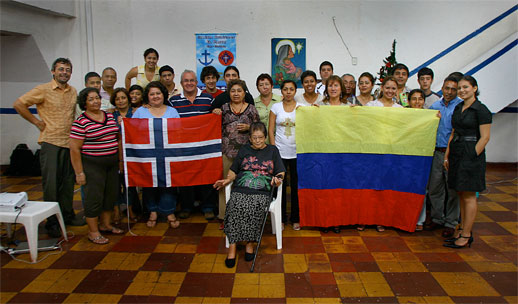
CALI: Cali is known as the city with the most beautiful women in Colombia, and in spite of a population of some 2,6 million, it barely has a single tall building. We lived in a hotel a stone`s through from the central bus station, at 20 USD a night, including air condition and pure luxury for two circumnavigators. Even though the city is worn and torn, the centre of the city is beautiful. We strolled about the Christmas-decorated main streets and photographed, and we have barely seen anything like this before. Police is everywhere to be seen, and we felt very safe. We celebrated Christmas together with a married couple from Lofoten, and had a great time. We didn’t stray far from the centre of the city before we hit rural surroundings, and Colombia is really a beautiful country! In the mountains, it resembles Norway, whereas in the lower regions, it resembles Africa and the tropics.
ABUSED: Amparo is working to helpå other women escape from prostitution and drugs. She herself went from luxury prostitute to street hore, was raped, abused and beaten. Here she shows some of the scars from burns inflicted on her back. - The only thing I have left from the life I have led, is a world of solitude, she says sadly.
BURGERS: We served burgers for dinner together with the missionaries in Bogotà. Very popular for the more than 70 boys and men residing there. The project is supported financially by NORAD.
ARTIST: Jefferson became a drug addict when he was already a grown up. He is now rehabilitated, and has taken up his art profession again.
NOT BEAUTIFUL: Bogotà is not a beautiful city, but still attractive. Green hills surround it, and the climate is like in Norway in the fall.
